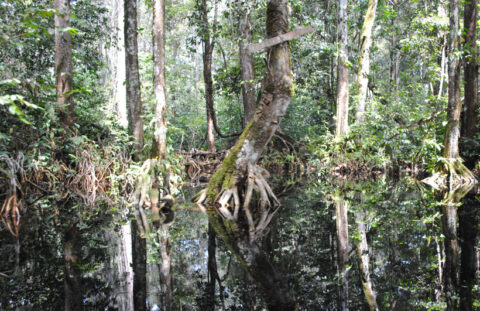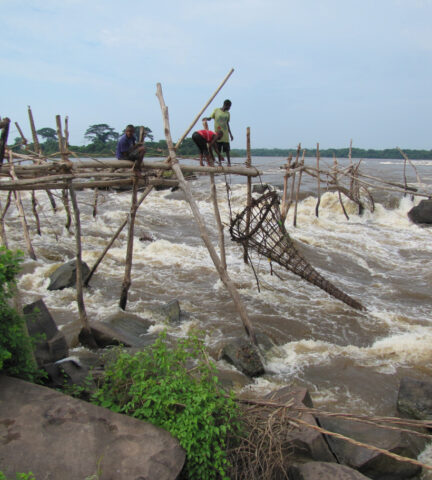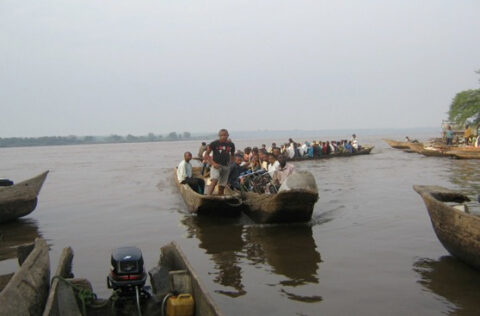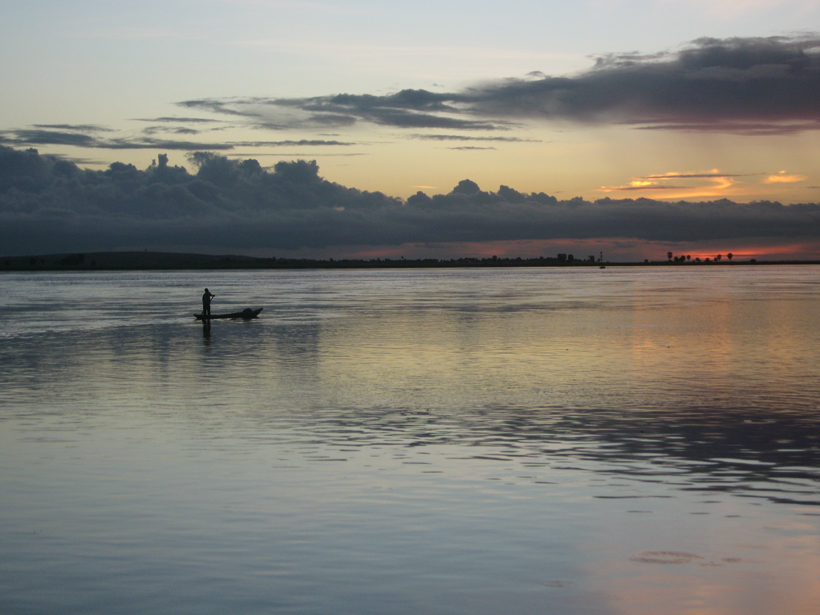What do we really know about the Congo? Most of what we know is rooted in historic accounts and news blurbs, which are often rather negative. Hydrologic science is also ignorant:

There is an order of magnitude more peer-reviewed papers published about the Amazon than about the Congo. Yet, with over 80 million people living in a dozen countries within and around the Congo Basin, there is great opportunity, especially for science.The two main barriers limiting scientific discovery in the Congo are language and economics. French is the universal language of the scientists and engineers who live and work in the Congo, and indeed many papers on the Congo have been published in French-language journals. Access to English-language journals, including those of AGU, is more limited; content may be available through portals such as Research4Life, but language and other factors may limit awareness and impact. Our paper, published in Reviews of Geophysics, is designed to overcome these two barriers. It is written in both English and French. The translation is professional and accurate, and, importantly, both language versions are freely available to anyone living anywhere via the internet. Just a click—no membership or special permissions are required.

The paper is authored by an international group who all came together as scientists seeking to understand the hydrology, biogeochemistry, and climate of the Congo. As such, the paper is a community effort promoting the ideals of sharing knowledge across barriers. The enormous size of the Congo invites everyone to come and discover. The foundation of such scientific discovery is the testing of hypotheses. In our paper, we have suggested several hypotheses that warrant such testing and the required funding.
Already, small groups of a half dozen researchers are using the hypotheses as the starting point for their research. With the language barrier lowered, local Congo researchers are now conversing and working with researchers from the U.S. and Europe. They are interested in understanding rainfall-runoff relationships, how river discharge is changing under climatically shifting atmospheric jets, and in determining water storages and hydraulics of the massive Cuvette Centrale wetlands with the immediately adjacent Congo River. Their partnerships, coupled with the suggested hypotheses, have helped them to secure funding from international agencies. This grassroots level of scientific interchange is one of the key steps in the discovery process.

On a larger scale, our dual-language paper has enabled us to successfully propose an AGU Chapman Conference. Researchers from around the world, and especially from the Congo, will gather at AGU Headquarters in 2018 and have discussions in both English and French. The hypotheses will be discussed and action plans for testing these will be agreed upon. Participating funding agencies will be urged to direct moneys and programs toward the Congo.
Now is the time for Congo research! English and French-speaking researchers everywhere, and especially from the Congo, are enjoying collegial interchanges. Economic barriers are being lowered as funding agencies likewise understand the great importance of working in the world’s second largest river basin and understanding its global impacts. Scientific discoveries will surely abound.
—Douglas Alsdorf, Byrd Polar and Climate Research Center and School of Earth Sciences, Ohio State University, Columbus, OH, USA; email: [email protected]
Citation:
Alsdorf, D. (2016), Promoting the universal language of science: Translating Congo research, Eos, 97, https://doi.org/10.1029/2018EO060197. Published on 14 October 2016.
Text © 2016. The authors. CC BY-NC-ND 3.0
Except where otherwise noted, images are subject to copyright. Any reuse without express permission from the copyright owner is prohibited.

